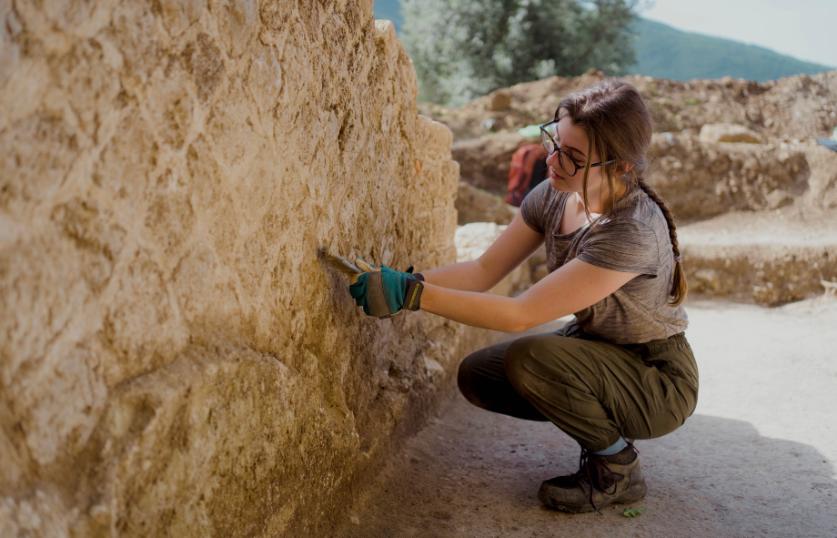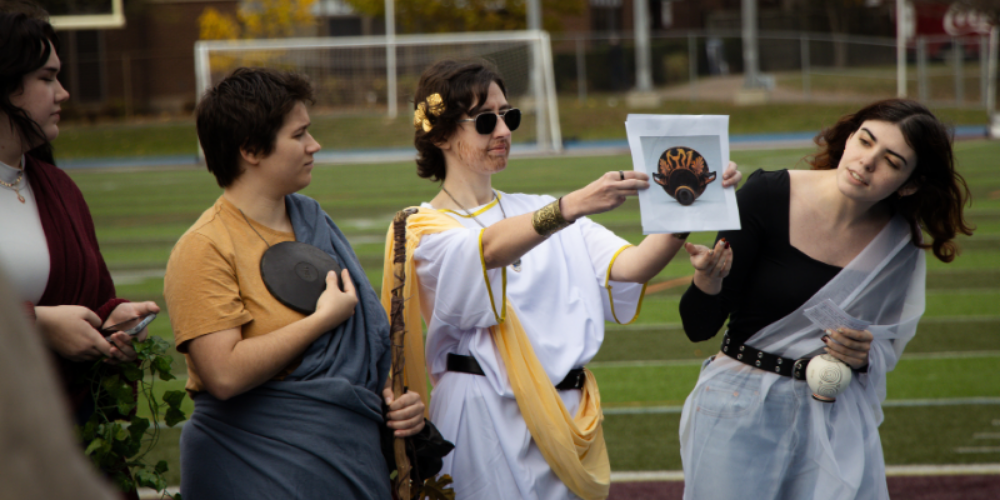Ancient Studies Program

Note: The Ancient Studies program was formerly known as Classics.
Why Ancient Studies?
Studying Ancient Greek and Roman civilizations can reveal the answers to some of society’s modern challenges. Ancient Studies is the study of the ancient Mediterranean world. It is one of the core topics in the humanities, providing students with a broad perspective on the origins of Western literature, art, architecture, philosophy, and religion.
The Saint Mary’s approach
Develop insight into what it means to be human within the context of ancient Greek, Roman and Near Eastern societies. You will also develop valuable critical thinking and writing skills. The Ancient Studies program at Saint Mary’s University focuses on elements of the social history, archaeology, art, and architecture of ancient Greece and Rome.
Hands-on learning
In Ancient Studies, you’ll have the chance to participate in a field studies held at the Roman imperial villa site of San Felice (Puglia), Italy. Get first-hand insight into the nature of imperial landholdings in southern Italy, including issues related to commerce and slavery, and the process of cultural changes. You’ll take part in an archaeological research project and learn field and laboratory techniques, including excavation, field survey, artifacts processing, environmental archaeology, photography, drawing, and artifact analysis.
Future career opportunities:
Many Ancient Studies students go on to fulfilling careers in law, museum studies, education, management, publishing, journalism, or archaeology. Here are some examples of future career opportunities:
- Archaeologist
- Journalist
- Archivist
- Writer
- Art critic
- Teacher
- Lawyer
Sample courses offered:
- Ancient Civilizations of Greece and Rome: You'll be introduced to the civilizations of ancient Greece and Rome, with particular regard to history, political organization, material culture, and contributions to Western cultural development. Examine primary sources relevant to the history, social, and political organization of Greek and Roman society and be introduced to the art, architecture, and material culture of these two ancient cultures.
- Bloody Caesars: Roman History II: You'll be introduced to the history of the Roman world from the establishment of the Principate under Octavian/Augustus to the decline of the Roman Empire in the western Mediterranean and Europe. Explore the evolution of the Principate and its eventual replacement by the Dominate, the nature of Roman imperialism, the role of the emperor as a political and religious figure, the interaction among the Romans and their neighbours in central Europe and the Near East, and the eventual political and economic disintegration of the imperial system.
- Pompeii: Examine the archaeological remains of Pompeii, including the site’s depositional history and the history of its excavation, as well as its architectural remains, material culture, and art. You'll be introduced to current archaeological research at the site, which is changing our understanding of Roman urban life.

Students in Dr. Sveva Savelli's “Sport and Leisure in the Ancient World” course brought history to the Huskies field for a dynamic reenactment of the Ancient Olympics. The course gives students a hands-on and interactive way to learn about the historic origins of the sports we know today and examines the impact they had on the societies that shaped them.
Read more
Students in Dr. Sveva Savelli's “Sport and Leisure in the Ancient World” course brought history to the Huskies field for a dynamic reenactment of the Ancient Olympics. The course gives students a hands-on and interactive way to learn about the historic origins of the sports we know today and examines the impact they had on the societies that shaped them.
Read more